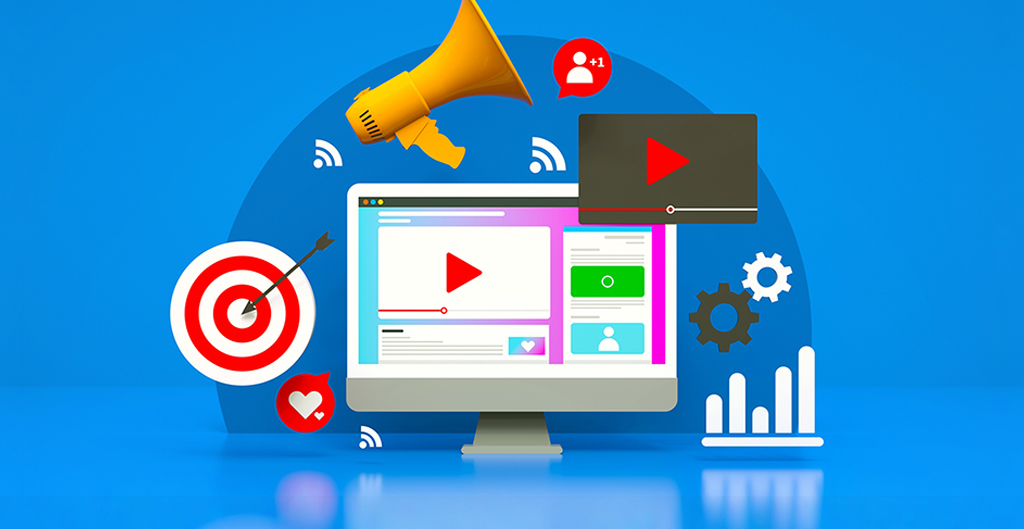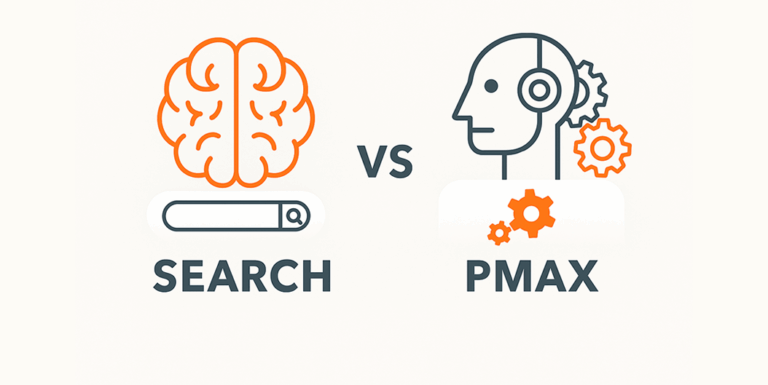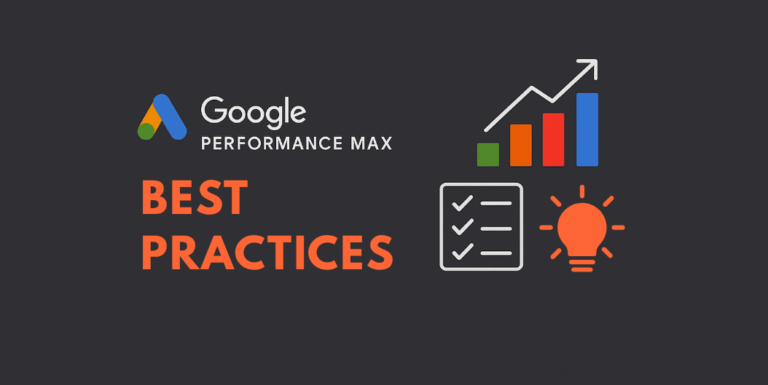Google’s Demand Generation vs. YouTube: When to Use Each in Your Advertising Strategy
As Google Ads continues to evolve, so do the ways advertisers can engage audiences with video. YouTube campaigns have long been a cornerstone for awareness and consideration—pairing sight, sound, and motion to deliver powerful brand storytelling. Now, Demand Gen builds on that foundation, offering a new way to connect with high-intent users through a mix of immersive formats, expanded placements and AI-driven targeting.
Both campaign types tap into Google’s trusted network and can showcase strong video creatives—but they serve different roles in the funnel. Knowing when to use each is key to driving better results.
Let’s take a closer look at how they compare.
Campaign Objectives: What Are You Trying to Achieve?
As the name suggests, Demand Gen is built to generate demand and drive results across Google’s most visually rich properties, beyond video. These campaigns run across YouTube, Discover feed, Gmail, and the Display Network, making them ideal for marketers looking to cast a wider net while still attracting high-quality traffic or leads.
YouTube campaigns, on the other hand, focus solely on video delivery within the YouTube ecosystem—including in-stream, in-feed, Shorts, and more. They’re ideal for advertisers looking to maximize their video content or amplify other digital investments like social, search, or CTV—perfect for brand storytelling, awareness, or performance-driven messaging.
Audience Targeting Capabilities: Control vs. Automation
Both campaign types support audience-based targeting—like in-market, affinity, remarketing, and custom segments—but the key difference lies in how targeting works:
- Demand Gen campaigns rely solely on audience targeting. They don’t use keywords or placements, instead leaning on Google’s AI and machine learning to find the users most likely to engage or convert.
- YouTube campaigns give advertisers more control. Alongside audience targeting, you can layer in keywords, topics, and specific video or channel placements—making YouTube ideal when you want tighter control over where your ads appear and in what context.
Creative Formats: Video-Only vs. Multi-Format
Demand Gen campaigns run across multiple Google properties, including YouTube, Discover Ads, Gmail, and more, so they require assets beyond video, including:
- Static images (square, landscape)
- Text (headlines, descriptions, etc.)
- Video (horizontal, vertical, square)
- Carousel ads (2-10 image cards + Headline, description, CTA, logo, etc.)
This flexibility makes Demand Gen a strong choice for brands that want to utilize their full-stack of creative assets and extend your impact beyond video.
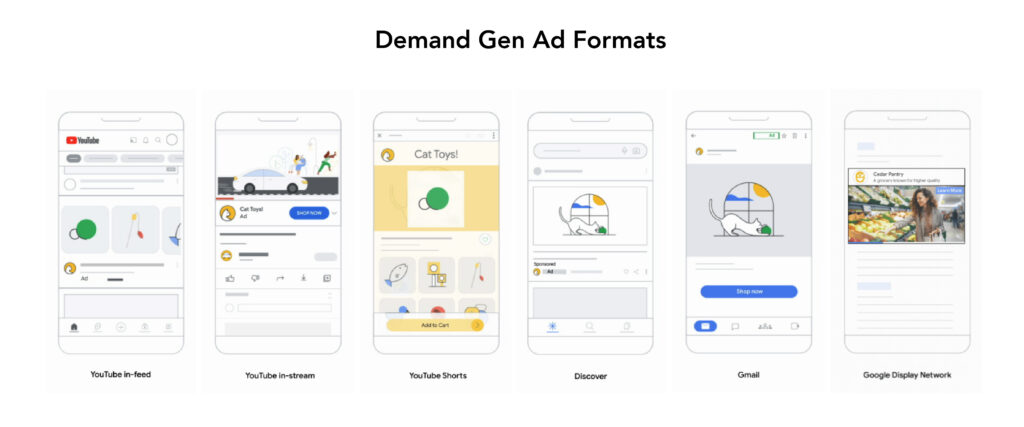
YouTube campaigns are video-only, appearing in YouTube videos, shorts, search results, related videos, and the homepage. They support vertical, square, and horizontal sizes, and can play seamlessly on mobile, tablet, desktop, plus connected devices like TVs & gaming consoles. Available formats include:
- Skippable and non-skippable in-stream ads
- Bumper ads
- In-feed video ads
- Shorts (vertical only)
These are built specifically for maximum impact within the YouTube environment, where video takes center stage.
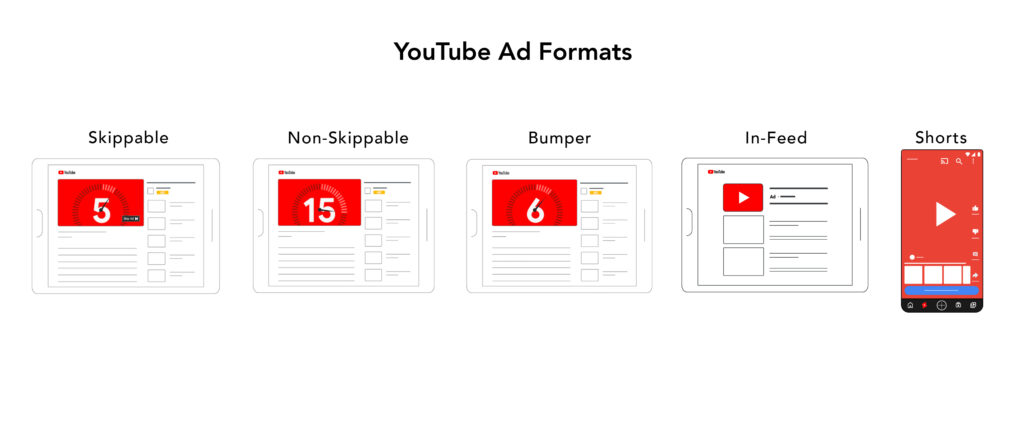
Bidding & Optimization: How Are Results Measured?
Demand Gen campaigns use automated bidding strategies designed for goals like driving traffic, leads, or purchases. These include:
- Maximize Clicks
- Maximize Conversions
- Target CPA
YouTube campaigns offer specific bidding strategies depending on your campaign goal including:
- CPV (Cost per View) for awareness
- Target CPA or Maximize Conversions for action-based outcomes
For view-through engagement or brand lift, YouTube provides more robust measurement tools and control. For driving site actions efficiently, with less focus on manual bid settings, Demand Gen may be the better fit.
When to Use Each Campaign Type
Choosing between Demand Gen and YouTube often comes down to your campaign goals—this quick guide highlights where each excels.
| Goal | Demand Gen | YouTube |
| Drive site traffic or leads | ✅ | ✅ (Video Action only) |
| Tell a compelling video story | 🚫 (limited video placements) | ✅ |
| Target specific YouTube channels | 🚫 | ✅ |
| Expand reach across Google’s visual-first channels | ✅ | 🚫 |
| Retarget past site visitors | ✅ | ✅ |
| Run image + carousel creatives | ✅ | 🚫 |
Need Help Navigating Your Google Ads Strategy?
At first glance, Demand Gen and YouTube campaigns may seem similar, especially since both are built around video creatives. But their differences in placement, targeting, and optimization strategies make them uniquely suited to different marketing goals.
- Use Demand Gen when you’re looking to spark interest and drive mid-funnel action across various Google properties.
- Use YouTube campaigns when your focus is video-first storytelling or reaching users inside YouTube with precision.
At Gigawatt Media, we help advertisers navigate Google’s evolving campaign landscape with confidence. Contact us today if you’d like to dig deeper into how Demand Gen or YouTube could support your goals.

